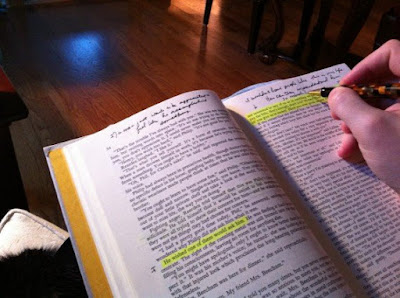Active reading
Reading an academic paper on active reading, what have I learned?
The paper is titled “using
student constructed questions to encourage active reading” It was published in
1984 by the Author Ernest Baljthy.
Active reading is a great
asset to have to help you study, active reading involves skimming paragraphs,
taking notes, making questions and answers, and paying attention to different headings
and formatting. Active reading means reading something, then figuring out the
relevant parts that you need.
Tips for active reading
are:
- Highlighting/underlining key words and
important information. You need to be selective – don’t overdo it.
- Use post it notes to explain in detail
more important content
- Ask questions like: Who is the intended
audience? Who wrote it? Will it help me with other material I have
studied? Why do you think it was written? Is it from a bigger piece of
text?
- Testing yourself by reading for twenty
minutes putting the book away and marking down key points from memory.
- Look out for words like 'most
importantly', 'in contrast', 'on the other hand'.
- Make a recording of yourself to listen to
later.
At first, I struggled with
this assignment but I after watching some helpful videos on active reading I managed
to get the hang of it.
Bibliography
Bajthy, E.
(1984). "Using student constructed questions to encourage active
reading". Journal of reading.
Critical reading
techniques. (n.d.). Retrieved from The open university:
https://help.open.ac.uk/active-reading

Hi Jenny!
ReplyDeleteI just finished reading your blog post, and I think that you did a great job! The layout of your blog was nicely divided into paragraphs which made it easy to read. As well as that, your use of language was clear and undertandable.
Throughout your blog, I really liked how you informed the reader with various facts while adding bits of your own opinion and experiences on the topic of active reading. I found that to be very engaging, and it added a nice flow to your entire piece!
I found it very helpful that you listed all of the tips to active reading and also left a bibliography of your references at the bottom, making it clear as to where you gathered your information from.
I really liked your blog post, good job! :)